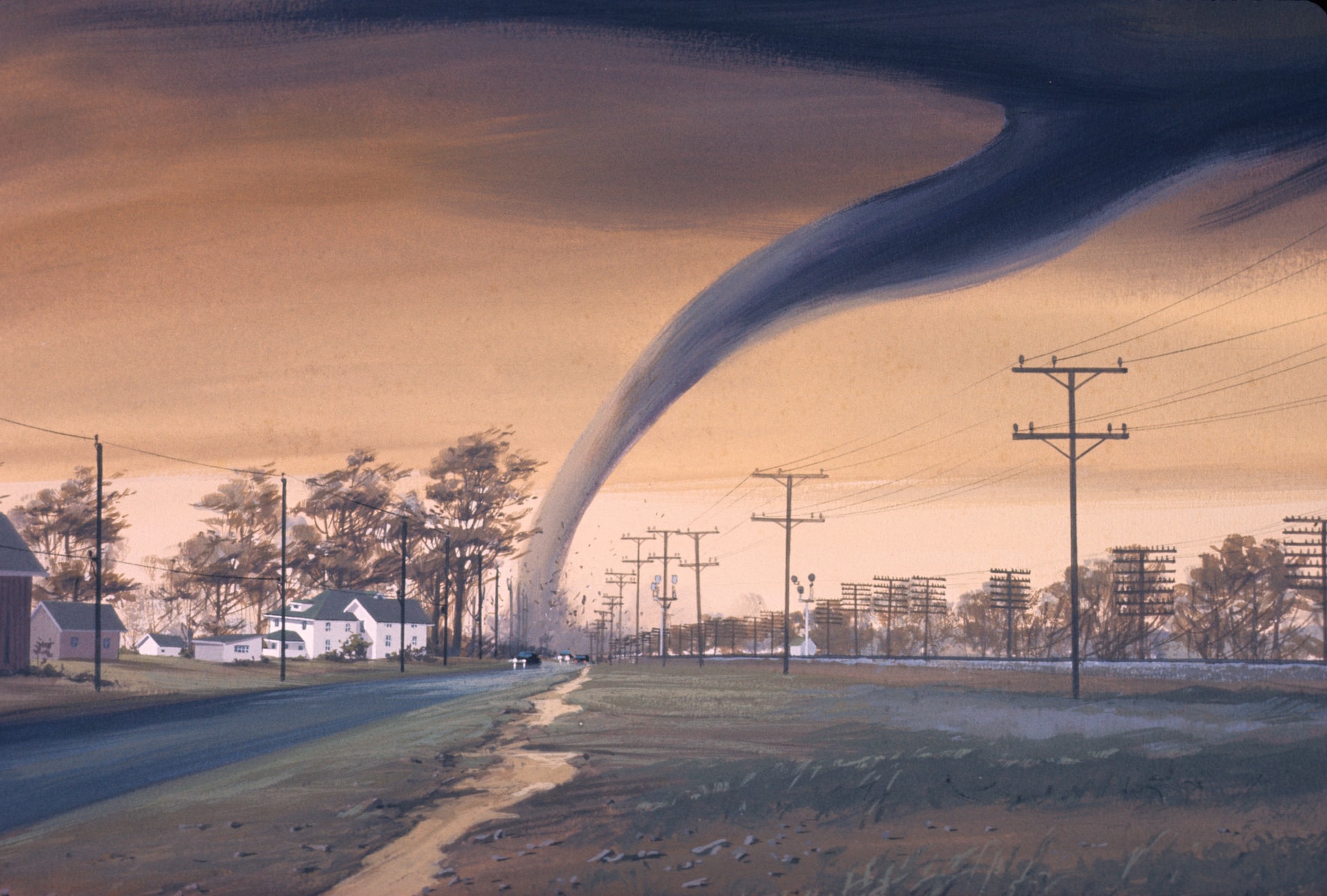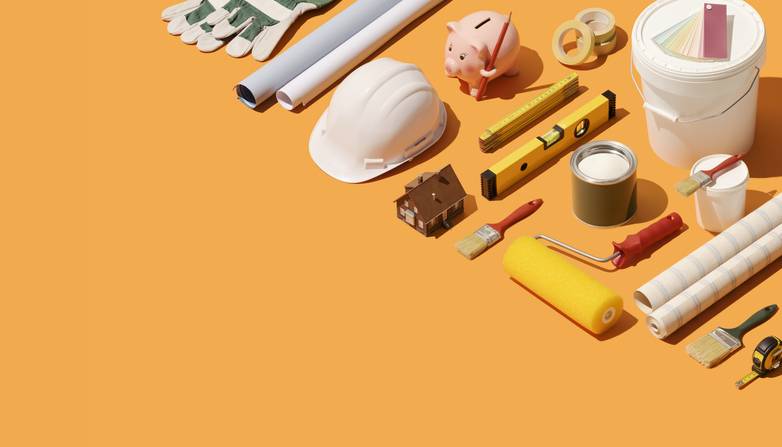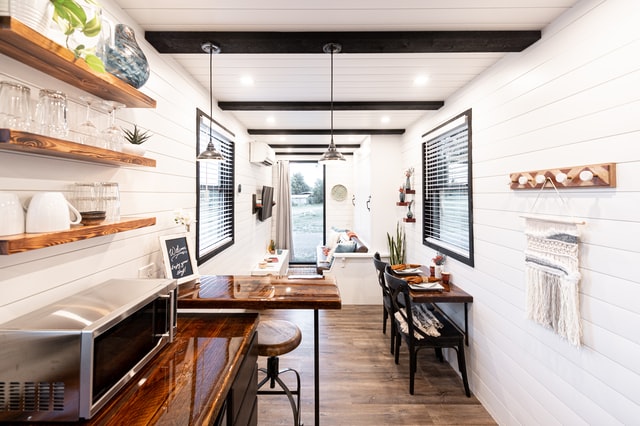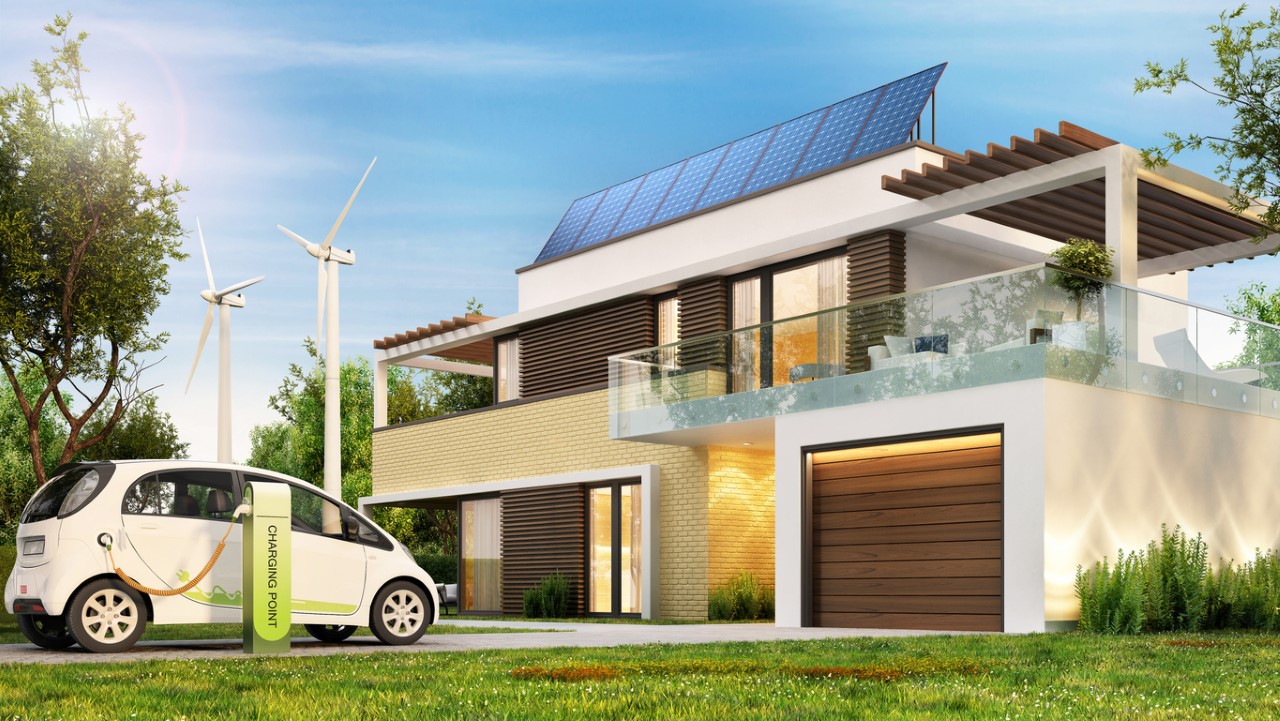Our home is our sanctuary, our comfort zone, our castle, so it’s only natural that we expect to feel safe and secure there. But each geographical region of the country is associated with some type of natural disaster, and some areas are vulnerable to several. According to the Insurance Information Institute, “there was an average of 520 natural catastrophes per year between 1989 and 2018. In 2019 alone, there were 820 — a nearly 58% increase from the average over the past three decades.” Insured losses for damage caused by these natural disasters exceeded $82 billion, a statistic that doesn’t reflect the uninsured losses or incalculable losses of personal items like family photographs and other cherished objects. Homeowners insurance is essential to protect your home in case of loss, however, you can also protect your home with better construction and planning according to the common natural disasters in your area.
Nature has no concern for roofs, walls, and foundations and, unfortunately, many construction firms have little concern about building housing that can provide a robust defense against the natural disasters that are associated with their setting. Although builders must construct houses according to local code, that may not be enough for homebuyers who are looking for properties that are truly designed with Mother Nature’s fury in mind.
The Costs of Property Damage Due to Nature
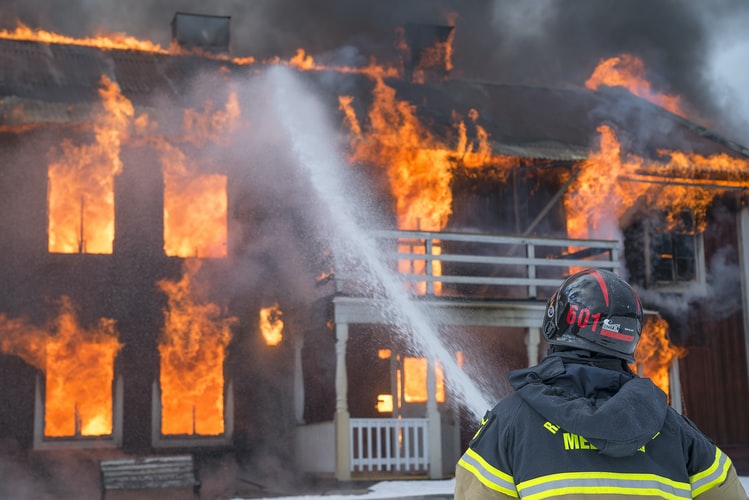
While $82 billion reflects the cost to insurance providers, the cost to individuals is more challenging to reflect. How does one quantify or measure the disruption to property owners’ lives after they’ve lost everything and must live out of a hotel for months or longer? Without getting into the nitty-gritty of specific insurance policies, we can say that while insurance coverage is a crucial safety net for homeowners, it simply doesn’t replace what once was, and the cost to individuals is both fiscal and emotional. The truth is, that $82 billion reflects insured losses. Actual losses in 2019, according to the Insurance Information Institute, exceeded $210 billion.
The losses not only come from the destruction of homes, for also of offices and the workplace, being prepared for natural disasters can save lives, homes, and jobs.
Benefits of Better Construction and Design Planning
Constructing a disaster-resistant home requires careful planning. It’s also essential to work with an architect and construction firm that has experience and expertise with disaster-proof constructions for the area in question. The main benefit for these types of constructions, of course, is increased safety. A home that’s built to provide better resistance to hurricane-force winds is apt to provide a safer haven for its residents than a home that is not constructed with the local weather and climate in mind.
However, there’s a decided fiscal benefit for property developers, home buyers, and insurance carriers. Waiting to build a disaster-resistant house to replace one that was destroyed by a natural disaster costs many times more than building one from the outset. Homes constructed specifically for the geographical region may also be more comfortable to live in owing to the better planning associated with elements such as building materials, energy efficiency, and routine maintenance. It stands to reason that the same house built in the West Coast, the Southern Atlantic Coast, or the Midwest region known as Tornado Alley isn’t likely to perform as well as a home that’s designed specifically for those regions and their conditions.
How Much Does It Cost to Build a Natural Disaster-Proof Home?
Constructing a house that’s designed to provide a robust level of protection against natural disasters depends on the disaster in question. For instance, one news outlet estimates that a Mississippi house builder can expect to pay about $5,000 more to construct a house that meets ‘gold standard’ hurricane-resistance standards (as outlined by the Insurance Institute for Business and Home Safety) as opposed to a house that simply meets the legal code.
The costs vary with the size of the construction and the type of disaster damage builders are trying to keep at bay. Building an earthquake-resistant house or building can cost anywhere from 5% to 15% more than a conventional one. As anyone with a California real estate license knows, the cost can vary by location. For instance, building an earthquake-resistant home in San Francisco is likely to cost substantially more than building one in areas of the Pacific Northwest. Home costs will vary depending on the local costs for materials and the contractor rates in the area.
Designing for Specific Natural Disasters
Depending on where you live, your setting might be vulnerable to disasters such as floods, earthquakes, hurricanes, tornados, wildfires, mudslides, heatwaves, or blizzards. Here, we’ve outlined some considerations associated with specific natural events.
Floods
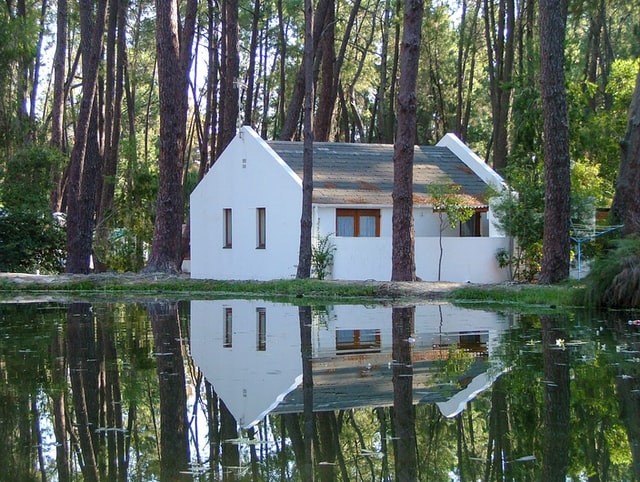
Building a flood-resistant house means paying special attention to elevation. The home’s foundation and basement or lower story at especial risk for water damage should a flood occur. When designing your flood-resistant home, consider the following:
Recommended construction materials. These include waterproof membranes, concrete, marine-grade plywood, ceramic tile.
Recommended house layout. This may include the use of flood walls around the perimeter of the home, floating home design, top-of-wall power outlets, foam and closed-cell insulation, and sewage backflow valves.
Flood preparation. Purchase flood insurance coverage, keep irreplaceable items as well as food and water in watertight containers. Items to keep on hand in case of flooding include water and food in watertight containers, flashlights, batteries, rain gear, tarps, first aid kits, and a battery-powered radio.
Retrofitting. This may include dry floodproofing (sealing the exterior walls) or levee construction.
Hurricanes

While no home is completely safe from hurricane destruction, it is possible to minimize possible hurricane damage by bolstering the structural elements of the home such as its walls and roof.
Recommended construction materials. Strong framing materials such as steel, wind-resistant roofing, fiber-cement siding, and pressure-treated timber (to prevent rot if exposed to rain.)
Recommended house layout. Raise electrical outlets at least a foot above baseboards, install sewage backflow valves, install impact-resistant windows and doors, and install PVC shutter systems.
Hurricane preparation. It’s important to barricade windows with a shutter system if possible or use plywood if you can. Items to keep on hand in case of a hurricane include several waterproof tarps and tie-downs, food and water stored in watertight bins, batteries, a battery-powered radio, first-aid kit, and a fire extinguisher.
Retrofitting. This may include installing waterproof membranes or rain-screen systems, additional fastenings for roofing, and gutters, such as truss screws or ring-shank nails.
Earthquakes
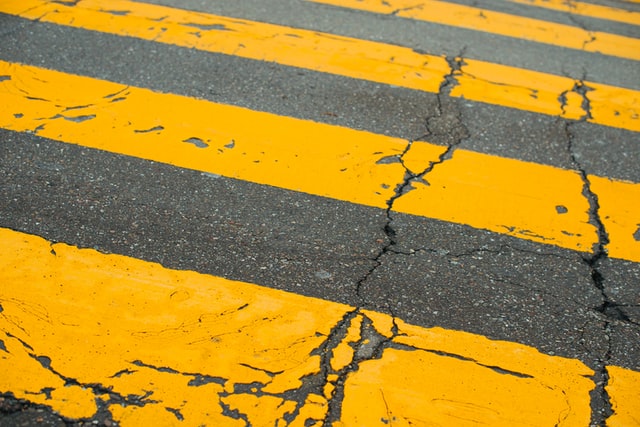
Building an earthquake-resistant home requires the installation of reinforced foundations, the use of lightweight construction materials, and materials designed to absorb seismic shock waves.
Recommended construction materials. Steel, wood, bamboo, and polymers designed to promote strength and ductility are ideal construction materials for earthquake-prone areas.
Recommended house design. Structurally sound geometry is the name of the game here—think overall square or rectangular layouts.
Earthquake preparation. Install break-away shut-off valves for gas appliances, secure the water heater to the wall, anchor heavy furnishings like bookcases to the walls, and install locking devices or strong latches on cabinets. Items to keep on hand in case of an earthquake include a fire extinguisher, first-aid kit, batteries, portable radio, flashlight, food, and water.
Retrofitting. Bolster home foundation-to-frame connection, and install wall bracing.
Tornado
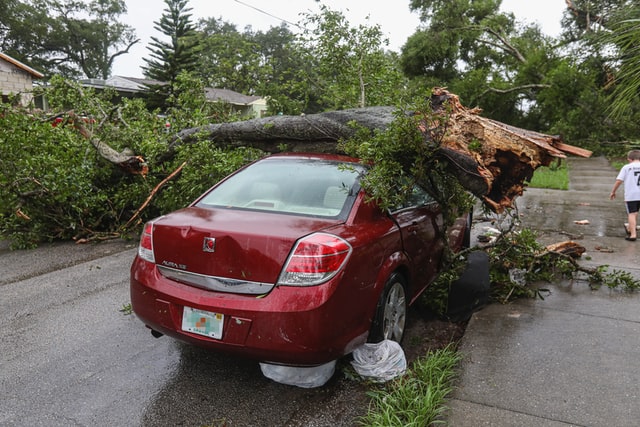
Designing a tornado-resistant home means guarding against high winds and using impact-resistant materials.
Recommended construction materials. Concrete forms, impact-resistant windows and doors, and wind-resistant roofing are ideal for homes in Tornado Alley.
Recommended house layout. Layouts for tornado-resistant homes include ICF (concrete) walls, rounded dome-shaped roof, and a home cabling system that tethers the house to the ground.
Tornado preparation. Prepare an internal safety room without windows, secure loose shingles, store all outdoor items like lawn furnishings where they won’t become missiles during a tornado, and repair loose exterior components. Items to keep on hand in case of a tornado include an emergency safety kit, water, food, batteries, a flashlight, and a portable radio.
Retrofitting. Install deadbolt locks on doors, install impact-resistant windows, brace garage doors, and prepare a home shelter, like a safe room or cellar.
Wildfires
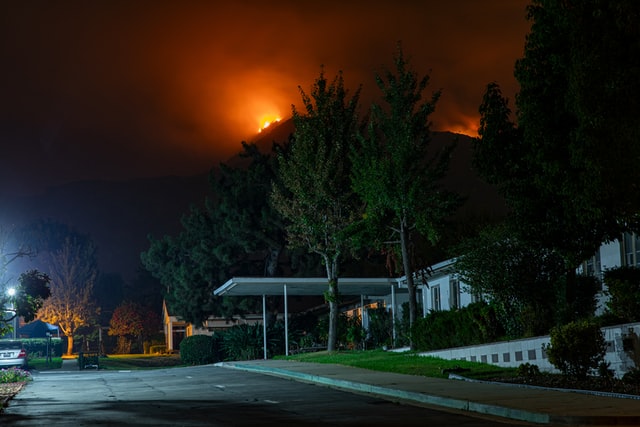
Building a wildfire-resistant home requires space and distancing the home from combustible materials like wooded areas and other houses. Builders can use non-igniting materials for roofs and other structural elements to reduce the risk of its destruction.
Recommended construction materials. Fireproof concrete blocks, stucco, and tile for the exterior are ideal materials for homes in fire-prone areas.
Recommended house design. Build at least 100 feet away from combustible materials. Use driveways, patios, or pavement to help protect the house from encroaching flames. Install a tile roof and ember-resistant exteriors, and install a sprinkler system around the home’s perimeter.
Wildfire preparation. Block louvers and vents when a wildfire is approaching, and remove combustible debris in gutters and around the home. Remove dead vegetation and tree limbs.
Items to keep on hand in case of a wildfire include a whistle for signaling for help, water, food, a first aid kit, important documents, cash, and a disaster plan including where to go in case you need to evacuate.
Retrofitting. Install fire-resistant landscaping like gravel and fire-retardant plants like sumac and rock rose. Install roll-down fire-resistant metal screens for windows and doors. Clear landscaping to create an ember-resistant zone around the home’s perimeter, reduce the garage’s ignitability (often where gasoline and other ignitable materials are stowed).
Heatwaves
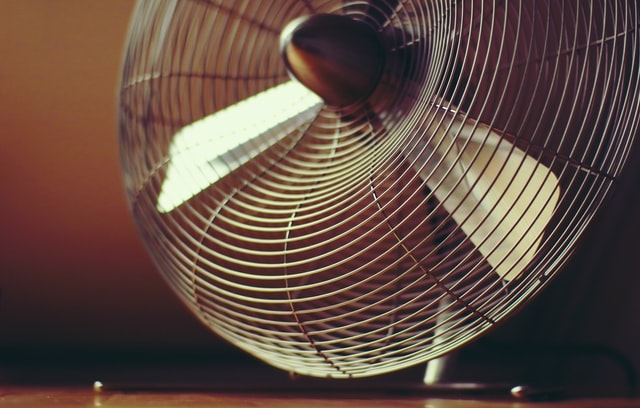
Heatwaves can be deadly. While they don’t pose the same level of threat to dwellings that wildfires or floods to, they can cause damage to homes. To design a heat wave-resistant home, designers should focus on interior air circulation, optimum cooling systems, and cool-load avoidance measures.
Recommended construction materials. Cool materials include stucco, brick, concrete, and gypsum.
Recommended house layout. Install light-colored roofing materials to help deflect heat from the home, install a solar attic fan, use awnings to deflect heat from windows, and choose single story layouts, since heat rises.
Heatwave preparation. Much danger during a heatwave comes from power outages that often occur when energy systems are overtaxed. Run your portable fans when you’re in the room, and be sure to have plenty of water on hand for you and your pets. Shield windows exposed to the sun, and have somewhere you can go to cool off if you get overheated. If possible, purchase a generator to keep the electricity on in the event of a power outage.
Retrofitting. Install awnings for windows and screens for patio doors; good insulation keeps your home cool and warm according to what you need, and install an energy-efficient air conditioning system that’s the right size for your home.
Blizzard

Designing a house for a cold climate that’s vulnerable to heavy snows and blizzards means paying attention to insulation and the home’s essential systems, such as its plumbing system and roof.
Recommended construction materials. Materials ideal for blizzard conditions include vinyl siding, spray foam insulation, and double-paned windows.
Recommended house layout. A sloped roof in a blizzard-prone climate makes it easier to remove, and it prevents snow from accumulating deeply on the roof. Install large south-facing windows to capture more natural heat.
Blizzard preparation. Purchase an efficient wood-burning stove, and have plenty of firewood on hand in case the blizzard knocks out the power to your home. Have a week’s worth of food and water on hand, and be sure to have warm blankets and clothing available. Consider a generator to keep the heat on if the electricity goes out. Items to keep on hand in case of a blizzard include shovels, a snow-blower, warm clothing, a flashlight, portable radio, batteries, de-icing salt, and plenty of food and water.
Retrofitting: Install pipe insulation to prevent them from freezing, and provide cover for entrances so they don’t become blocked by snow. Install a snow-melting system for walkways and the driveway.
Keep in mind that this is an overview for building disaster-proof homes. Hopefully, it will inspire you to design in accordance with your setting — or to take measures to retrofit your house to protect it from Mother Nature’s fury.
